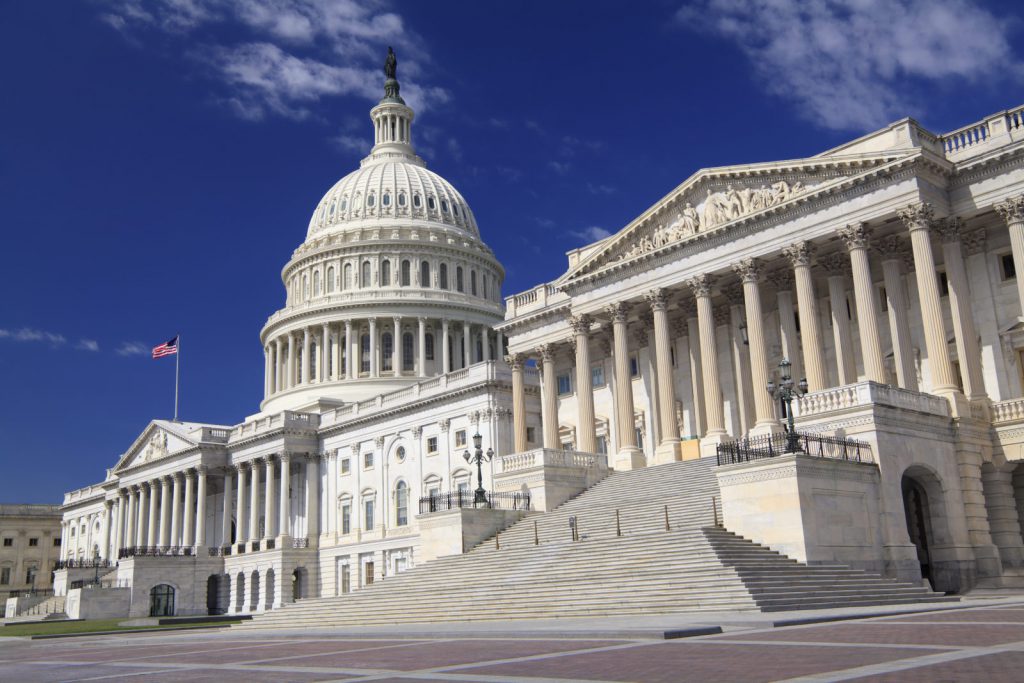
Published June 24, 2017
The health-care bill now before the Senate has been shaped by a number of lessons that Republicans have learned in the course of a six-month, bicameral legislative process. It is a function of some things they’ve come to prioritize about the individual health-insurance market and Medicaid, and some things they’ve learned about the intricacies of the Byrd rule and Senate procedural constraints. But mostly it is a function of something they have learned about themselves: After seven years of saying they want to repeal and replace Obamacare, congressional Republicans have been forced to confront the fact that many of them, perhaps most, actually don’t quite want to do that.
That doesn’t mean that most of them never did. The case for repeal was strongest in the three or four years between the enactment and implementation of Obamacare. As more time passes since the beginning of implementation three and a half years ago, and more people’s lives become intertwined with the program for good and bad, the case for addressing Obamacare’s immense deficiencies by repeal weakens as a practical matter in favor of a case for taking them on by alteration.
I don’t think it has weakened as much as congressional Republicans do. And so I still think it is very much the case that the cause of good policy (almost regardless of your priorities in health care) would be better served by a repeal and replacement, with appropriate transition measures, than by this sort of tinkering—you’d get more coverage, a better health-financing system, and a more appropriate role for government.
Various conservative health-care wonks have proposed various ways of doing this over these seven years (I like this one, but I’m not objective, and most if not all would have made for serious improvements). Various Republican politicians have patted these wonks on the head and said “someday,” but everyone has understood that if and when an opportunity presented itself it would be shaped by its own unpredictable political exigencies.
At first this year, congressional leaders tended to describe these exigencies in terms of the limits of the reconciliation process. But with each step it has turned out that reconciliation can bear much more than they first suggested. It is surely a constraint, but if the bulk of this Senate bill passes muster under the Byrd rule then reconciliation is not nearly as tight a constraint as it was said to be a few months ago.
The president has been an additional unpredictable political constraint—as the more coherent of his musings on health care have all suggested he is not comfortable with repealing and replacing the law, or at least is unfamiliar with the tradeoffs involved and unhappy when he learns about them. This probably had some effect on congressional Republican attitudes, at least early on. But another thing Republicans have learned in these six months is that Donald Trump is an exceptionally weak president, probably the weakest of their lifetimes, and he is likely to accept whatever they do. He’ll celebrate it, sitting himself front and center while they stand around him awkwardly. He’ll praise it wildly and inaccurately. And he’ll sign it—even if pretty soon thereafter, in the wake of bad press, he tries to distance himself from it on Twitter and calls them names.
So the most significant lesson Republicans have learned in this period is that what they—as a congressional conference guided by the sentiments of a majority of its members—want to do about Obamacare doesn’t begin with repeal. Whether they individually hold this view or not, congressional Republicans should not deny that this is the premise that they as a group have decided to start from, because the bill they passed in the House and the one they are now pursuing in the Senate wouldn’t make sense under any other premise. They are choosing to address discrete problems with Obamacare within the framework it created and to pursue some significant structural reforms to Medicaid beyond that, and they should want the merits of their proposal judged accordingly. Their premise is politically defensible—it is probably more so than my premise—and the proposal they have developed makes some sense in light of it.
On the substantive particulars, I would say the bill is mostly better than the House version passed last month. We will see what CBO and other modelers ultimately say (understanding the limits of such modeling), but it seems to me it will probably cover more people, reduce premiums more, and allow for a greater reassertion of state regulatory control over health insurance. Better than the House bill isn’t extravagant praise, of course, but it is certainly one bar such a bill ought to clear.
The tax credit in the Senate bill differs from Obamacare’s premium subsidies only modestly, but in ways that, again, make sense in light of what Republicans are after. It is pegged to a less comprehensive insurance model and will both cost less and leave more room for more variation in insurance design—though this obviously means it will be less valuable and helpful to some of the people now getting subsidies. Will less help in a more functional market be better than more help in a less functional market? There’s a good case to be made for that, but no one should pretend to know for sure.
The credit also reaches all the way down to the bottom of the income scale, which I think of as an element of the bill’s Medicaid reform. Where today, people newly covered by Obamacare’s Medicaid expansion (who tend to be childless adults with relatively higher incomes than the non-expansion population) are funded by the federal government on much better terms than the traditional Medicaid population (which tends to include more women with children and people with even lower incomes), the Senate bill would gradually equalize funding for the two groups, effectively shifting Medicaid’s focus back to the most vulnerable of its beneficiaries. In states that respond to that by pulling back the expansion—and for states that have not pursued an expansion—the fact that the credit now goes all the way down means the Senate bill would provide an income and age-based subsidy that would allow these lowest-income individuals to afford at least modest insurance coverage in the individual market.
That’s an improvement over the House bill and Obamacare, though I think it would make sense to provide some additional help to this lowest-income group. Some pre-funding of health savings accounts, for instance, could go a long way. The states could do that too, and should, but it’s not how congressional Republicans tend to think about the purpose of such accounts, alas. The portions of the conservative approach to health care that require spending public funds have never been as appealing as the rest on Capitol Hill.
The bill’s broader Medicaid reform and the move to per-capita caps or (for states that choose them) block grants is otherwise very similar to that proposed by the House bill. It would take effect more gradually, though will ultimately also likely reduce federal spending more, but would follow the same basic structure.
These Medicaid reforms probably won’t happen as written, because they are stretched out over a long span of time and yet are also highly controversial. But while the decline in the spending trajectory (which becomes particularly steep and unrealistic in the latter years of the budget window) would probably need to be moderated some by a future Congress, the structural reform would not be so easy to reverse—and any change would have to be paid for in ways that wouldn’t be so easy either. We will have to see how CBO scores the proposal, but eyeing it very generally I would say the Senate bill as written would probably mean that Medicaid would cost the federal government about 30 percent more 10 years from now than it does today (as opposed to about 65 percent more under current law), and would cover something like the same number of people at that point as today (as opposed to 10 million more under current law). All of that would be likely to change with future legislation, but the core structural reform—a move away from the horrendous state-match system—could well survive, and would be an important improvement almost regardless of spending levels.
But the biggest change from the House bill, and from Obamacare, might prove to be the way in which the Senate bill tries to give states regulatory flexibility and control over the individual insurance market. Here we see how more explicitly embracing the premise of this legislation—that Republicans are not repealing Obamacare, but they are addressing some of its biggest problems—can actually enable them to move more aggressively rather than less.
The federalization of health-insurance regulation is the core of Obamacare, and of the problem with it. The House bill sought to reverse it partially by allowing the states to obtain waivers from a couple of elements of Title I of the law—particularly the definition of essential health benefits, and the age-bands that govern how widely premiums can vary between younger and older people. The Senate bill pursues similar goals within the framework of Obamacare, by vastly expanding the range of permissible state waivers under Section 1332 of the law.
Under Obamacare, these waivers technically allow states to pursue different insurance-regulation regimes, but they are very limited in scope because a state has to show that it would achieve exactly the same thing the federal Obamacare rules would achieve, which means states can’t really do anything all that different. The Senate bill removes most of these “guardrails” on the waivers, requiring only that a state show that its proposed alternative would not increase the federal deficit. So while a state could not, for instance, end community rating rules (because the 1332 waivers have to operate within the framework of community rating created by Obamacare), it could very significantly change other kinds of rules and requirements within its borders—to a far greater degree than anything the House waivers envisioned. And the bill requires that these waivers be more or less automatically approved.
States could not only roll back essential health benefit definitions and broaden age bands to where they were before Obamacare, but also alter the uses to which federal dollars are put. They could take the amount their residents are eligible to receive in premium-subsidizing tax credits, for instance, and use it instead to create a new state benefit designed very differently. They could combine it with the stabilization fund dollars provided under this bill and with a state Medicaid reform to experiment with a different approach to providing access to insurance for their residents. They could alter the balance of benefits between younger and older people in the individual market, or change or eliminate the exchange in the state. If this were enacted, and once states got their bearings about just how much it would allow them to do, we could see some genuinely different approaches to health-insurance regulation among the different states—with blue and red models, rural and urban approaches, and more and less competitive systems.
The limits of this provision are a function of the fact that it alters a portion of a broader pre-existing statute. But it is very broad. In its scope and structure, this redesigned waiver would be unlike anything else in American federalism—which also means we don’t know how it would work. Those of us inclined to look favorably upon a bottom-up, experimental mindset in policy design will be inclined to think the best of the possibilities here. I am very much in the grip of this prejudice myself. Those inclined to think the state governments are filled with bumbling fools while Washington overflows with subtle expertise will think the worst of this idea. But these different expectations are all rooted in roughly equal ignorance, and the results will probably be mixed enough to leave us all feeling mostly confirmed in our presuppositions in time—just as the performance of Obamacare has. But for better or worse, if this bill were enacted I think this waiver approach could prove to be one of its most significant elements in practice.
Assuming, that is, that it survives the reconciliation process. And here to conclude we get to some big open questions about this bill that will need to be answered in the coming days if Republicans are able to bring it to a vote. Republicans began this process six months ago talking about the Byrd rule in the Senate as an immense obstacle to their ambitions. Now they are planning to take a bill to the floor of the Senate that assumes it to be a much lesser obstacle. And we will find out. One interesting test will be these expanded 1332 waivers. It’s not clear to me why they should pass muster with the parliamentarian, but their authors do seem very confident.
Another Byrd rule question will surely arise over the Senate Republicans’ alternative to the 30 percent premium surcharge for people not continuously insured, that had been in the House bill. It was intended, in the absence of the individual mandate, to dissuade people from waiting until they are sick to buy coverage. In the version of the bill released last week, senators removed the surcharge but proposed no alternative and therefore did nothing to address the risk of adverse selection. If the version of this bill scored by the CBO is that version released last week, this will mean the score will be a total train wreck, and also largely useless to assessing the bill the Senate will ultimately vote on. It has since become clear that senators plan to add a provision to address this problem: subjecting people who have not been continuously insured to a six-month waiting period before they can buy coverage. In order to comply with the Byrd rule, I assume they will need to frame this provision as a delay in the availability of the tax credit, rather than an actual waiting period to buy coverage. Either way, it will be interesting to see if the parliamentarian allows it.
A third and bigger Byrd rule problem will surely arise around the anti-abortion provisions in the bill. The Senate bill as released last week includes the House language imposing Hyde Amendment protections on the tax credit, so that it can’t be used to subsidize insurance that covers abortion. I think the likelihood that this provision will survive a Byrd-rule challenge is pretty much zero.
But the bill also does something else: In creating the new state stability fund—to be used by the states for reinsurance or otherwise to shore up the individual market so badly damaged by Obamacare—it establishes the fund within the existing Children’s Health Insurance Program. CHIP was created in the 1990s, and the law that established it applies Hyde Amendment restrictions to the program in its entirety, and several times over. That means that, as a matter of statutory construction and placement, the new state stability fund would be covered by the Hyde Amendment without now having to get Hyde language past the parliamentarian.
If this works it would establish a new kind of application for the Hyde Amendment language that has long prohibited federal dollars from paying for abortion in various programs. If I read it correctly, it looks like this provision would render any insurer who offers an individual-market plan that covers abortion in a given state ineligible to benefit from the stability fund in that state. It seems to me, though I can’t say I’m sure, that this would effectively mean that no insurance plans in the individual market would cover abortion. It could easily even mean that California, which has a state law requiring individual-market plans to cover elective abortion, would have to repeal that law or else forgo access to the stability fund. This, too, will prove quite a test of the Byrd rule, but I think the case for its qualifying for reconciliation is pretty strong.
These are only a few of the more significant provisions of the Senate bill. But they suggest the pattern for any broader assessment of the bill. It is the product of a decision not to repeal Obamacare but to improve things where possible—moving incrementally in the direction of a more functional and more market-oriented system—within the framework Obamacare established.
So while I don’t share the enthusiasm for this bill that my friend Avik Roy exhibits (and you should certainly read his view), I do think it is probably more good than bad on net—and could be readily improved and made more generous in years to come while retaining some important structural reforms and innovations, should further advances in Republican self-knowledge point in that direction.
Yuval Levin is the Hertog Fellow at the Ethics and Public Policy Center.








